

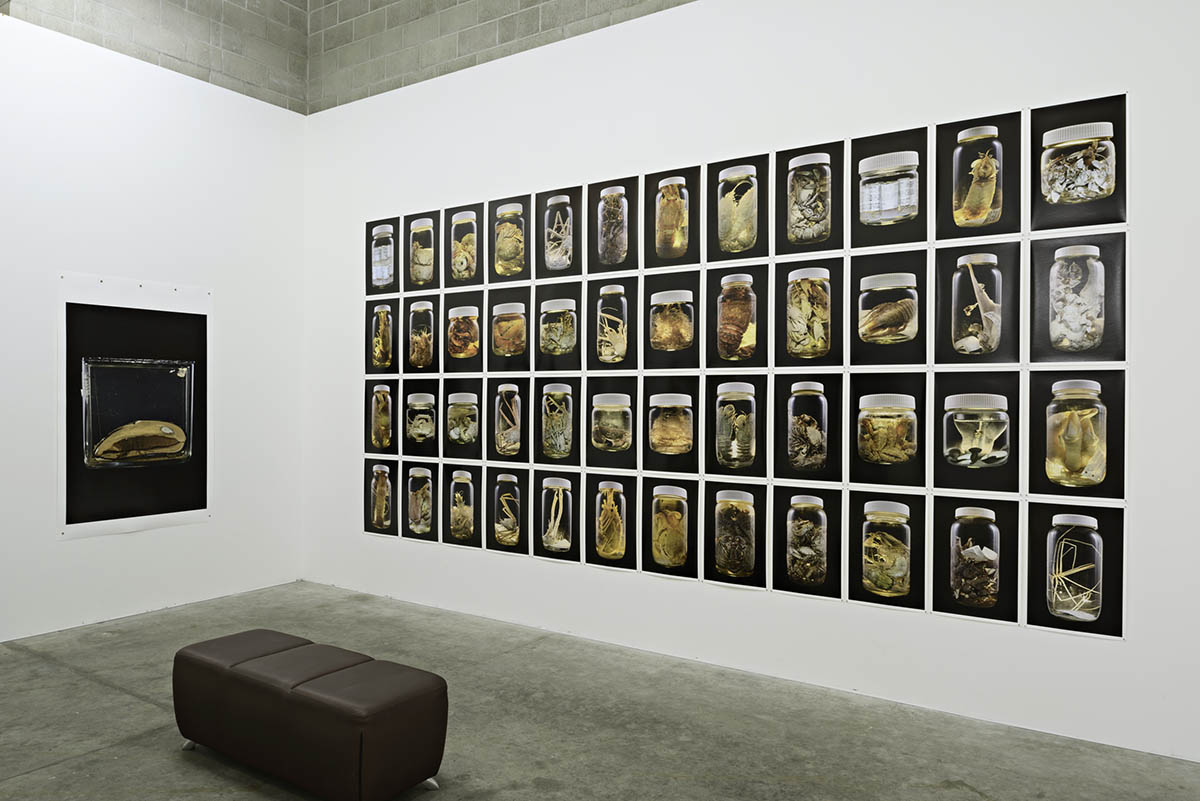
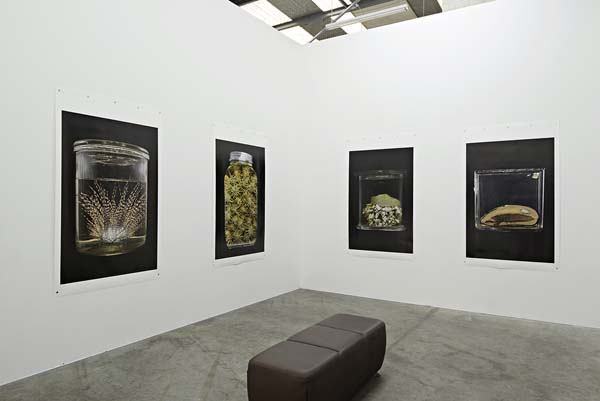
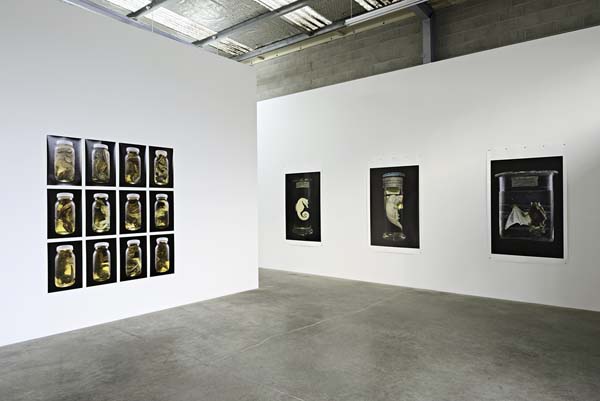
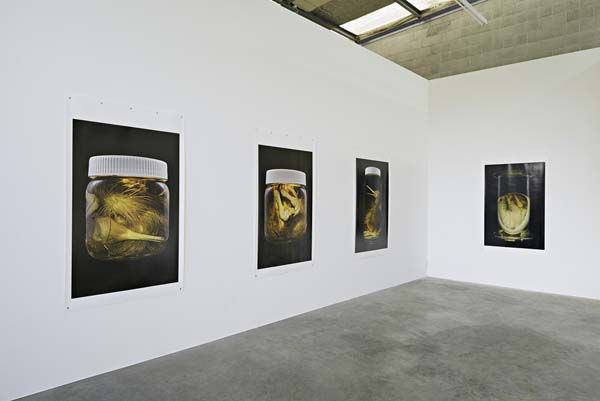
Museum 'wet stores' continue to be a source of inspiration for Neil Pardington in his latest show entitled The Order of Things at Jonathan Smart Gallery. The artist is no stranger to collections and collection areas, as those familiar with his exhibitions The Vault, 2007 and The Wet Room, 2009 well know. Now in the Auckland and Otago Museums, it is the confronting and 'terrible beauty' of individual specimens, crammed into glass jars of alcohol solution, which has caught his eye. Also striking to Pardington is the structure given by the glass jars, stacked and lined up row upon row in various shelving units, their placement designated by the Linnaean classification system of the collections. It is this taxonomy, this 'order of things' which is reflected by multiple grid-like photographs meticulously positioned by the artist upon the gallery walls.
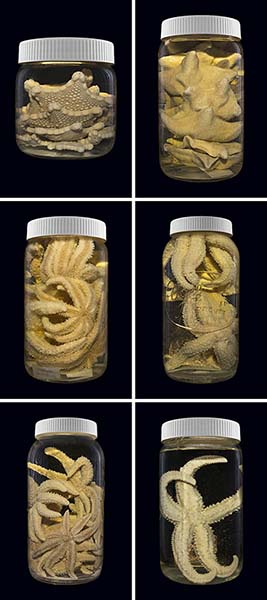 |
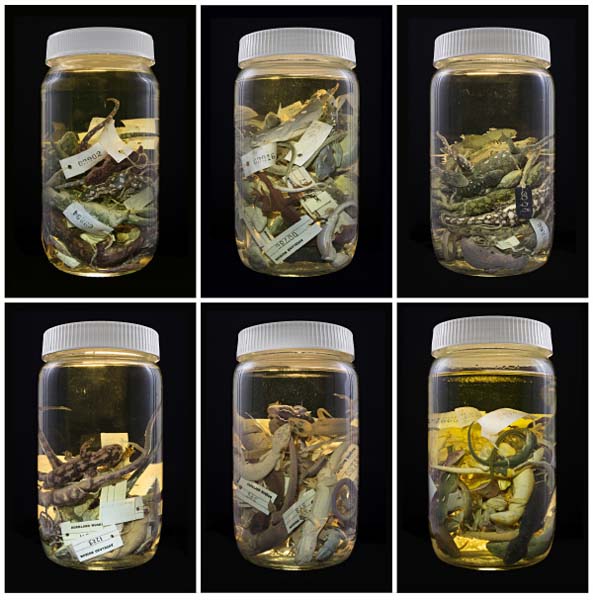 |
The following paragraphs are lifted from essays by Ewen Macdonald and Elizabeth Rankin respectively - two of the five texts written for 'Neil Pardington The Order of Things', an elegant and beautiful digital publication edited by Elizabeth Rankin and available from Kriselle Baker at http://www.bakerdouglas.co.nz/
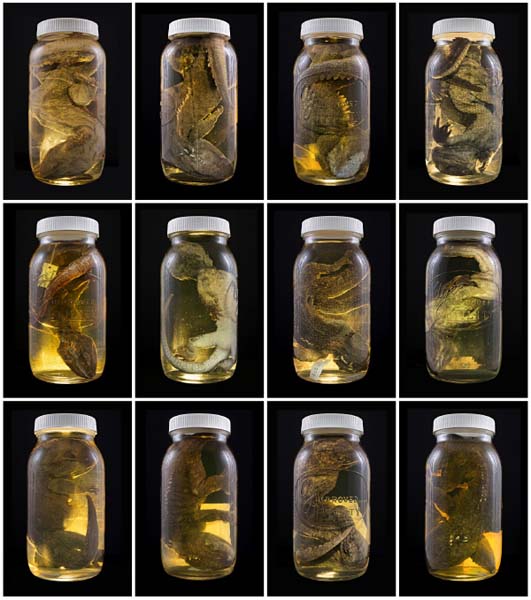 "…This is where Pardington's incorporation of the title The Order of Things is cleverly enigmatic: in referencing Michel Foucault's seminal text with the same title, the artist acknowledges systems of 'ordering' as a means of comprehending the chaos that, ironically, photographic images have helped proliferate…
"…This is where Pardington's incorporation of the title The Order of Things is cleverly enigmatic: in referencing Michel Foucault's seminal text with the same title, the artist acknowledges systems of 'ordering' as a means of comprehending the chaos that, ironically, photographic images have helped proliferate…
To summarise notes from his reading of Foucault, Pardington proposes that order is 'a moment of expression'…'an enabling structure'…'a hidden network made manifest'. In opting to present his photographs as grids or sequences, and in series, the artist reveals a conundrum: a tabula in any form simultaneously groups and divides. And, while it is an attempt to classify and put things in order according to designated similarities and differences, there is no surety in the selective process. Pardington's 'order of things' is his arrangement, his system. It is an approach that connects with his earlier photographic series that have equally explored and revealed the contents and contextual underpinnings of other institutions' collections. While each series has replicated particular categorisations, the artist's focus each time has been a rediscovery and re-imagining of the classifications we have come to take for granted. This is not so much an affirmation of 'order' in the world as it is an encounter with the power and transfixing processes of photographic exposure."
And from Elizabeth Rankin: Observing Order, Wakening Wonder: Neil Pardington's The Order of Things:
"…the intriguing way he set about recording the selected objects as brilliantly vibrant images, poised in darkness, depended on his own knowledge as a photographer. He positioned each specimen in turn inside a 900 x 900mm aluminium-framed cube, covered with fabric, with a central-opening zip in the front panel to create a small aperture for the lens of his camera…
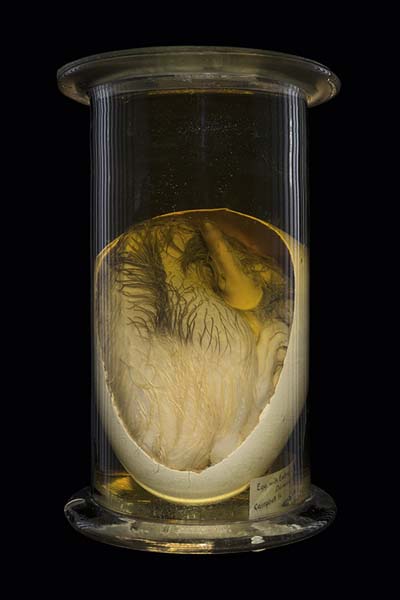 |
 |
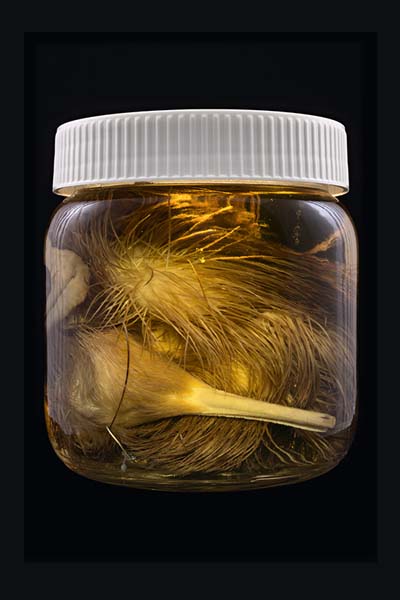 |
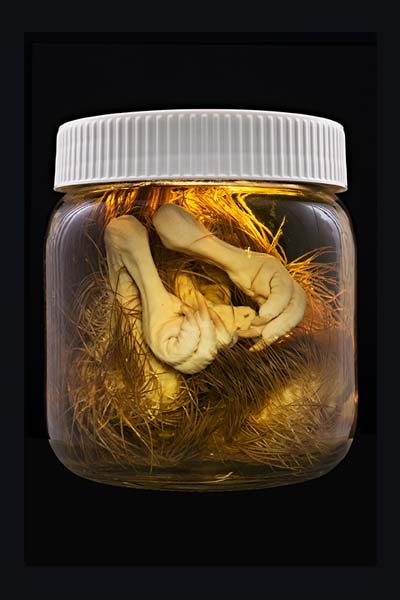 |
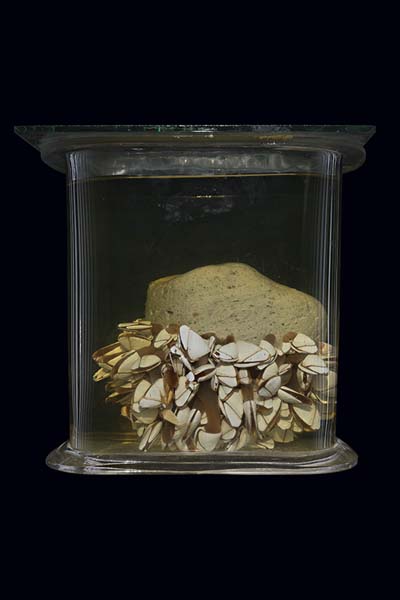 |
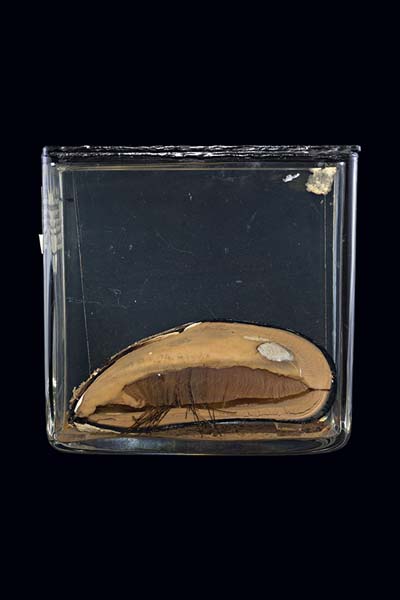 |
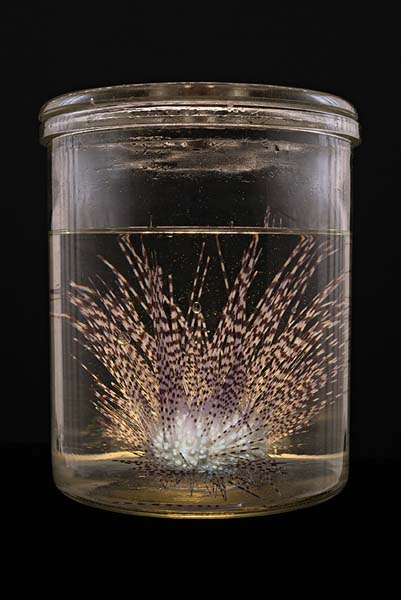 |
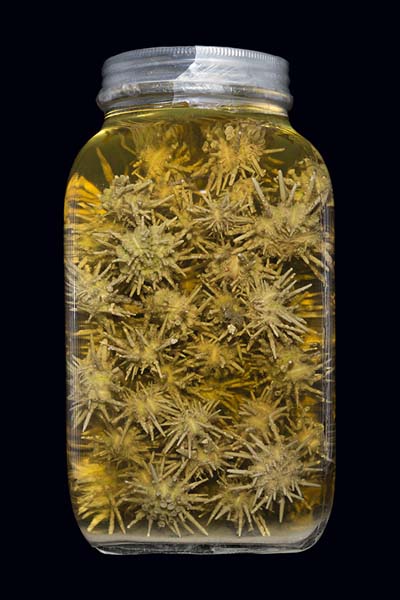 |
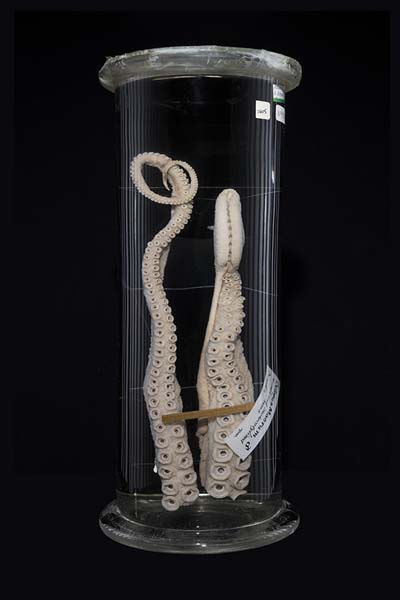 |
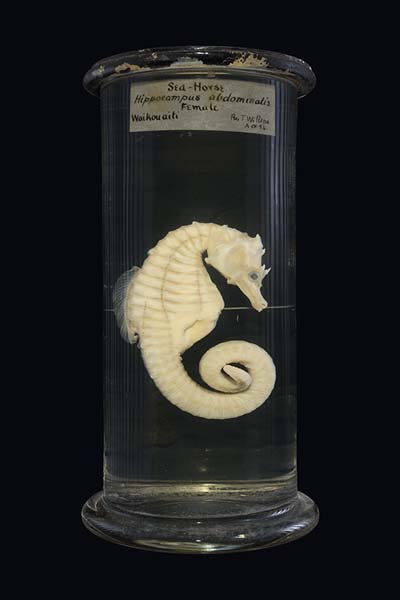 |
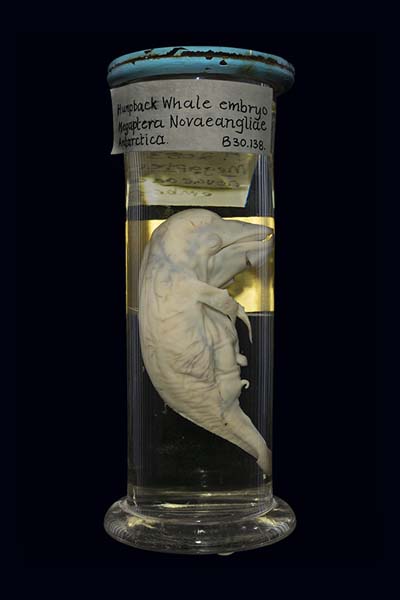 |
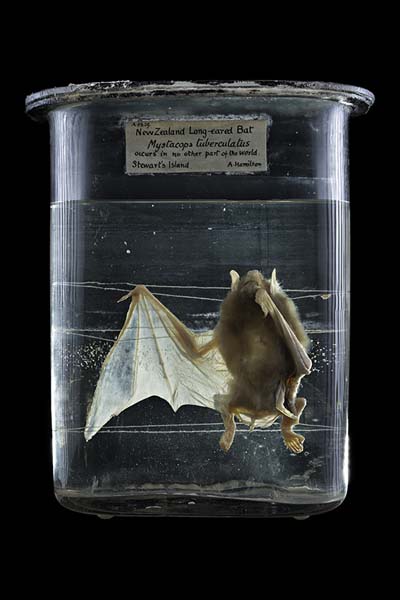 |
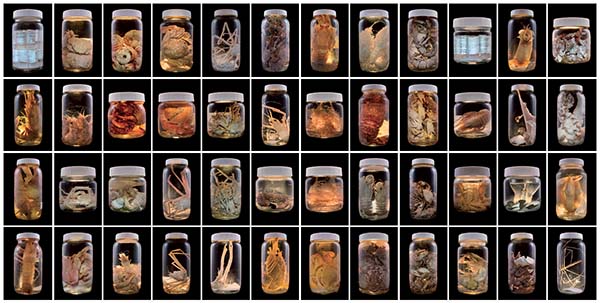
List of works
1 Mantelli / Kiwi, Auckland Museum Tamaki Paenga Hira #1, 2013
1500 x 1000mm, edition of 10
2 Mantelli / Kiwi, Auckland Museum Tamaki Paenga Hira #2, 2013
1500 x 1000mm, edition of 10
3 Apteryx australis / Tokoeka, Otago Museum, Dunedin, New Zealand #1, 2014
1500 x 1000mm, edition of 10
4 Diomedea epomophora / Toroa, Otago Museum, Dunedin, New Zealand #1, 2014
1500 x 1000mm, edition of 10
5 Reptilia / Ngarara, Mokomoko, Auckland Museum Tamaki Paenga Hira#1, 2013
Six 600 x 400 mm prints, overall dimensions 1260 x 1320 mm, ed of 3
6 Reptilia / Ngarara, Tuatara, Auckland Museum Tamaki Paenga Hira #1, 2013
Twelve 600 x 400 mm prints, overall dimensions 1920 x 1780 mm, ed of 3
7 Asteroidea / Patangaroa, Otago Museum, Dunedin, New Zealand #1, 2014
Six 600 x 400mm prints, overall dimensions 1860 x 860 mm, ed of 3
8 Mystacina tuberculata / Pekapeka, Otago Museum, Dunedin, New Zealand #1, 2014
1500 x 1000mm, edition of 10
9 Megaptera novaeangliae / Paikea, Otago Museum, Dunedin, New Zealand #1, 2014
1500 x 1000mm, edition of 10
10 Hippocampus abdominalis / Kiore moana, Otago Museum, Dunedin, New Zealand #1, 2014
1500 x 1000mm, edition of 10
11 Macroctopus maorum / Wheke, Otago Museum, Dunedin, New Zealand #1, 2014
1500 x 1000mm, edition of 10
12 Arthropoda, Auckland Museum Tamaki Paenga Hira #1, 2013
Forty-eight 600 x 400mm prints, overall dimensions 2600 x 5400mm, ed of 3
13 Mytilus galloprovincialis / Kuku, Otago Museum, Dunedin, New Zealand #1, 2014
1500 x 1000mm, edition of 10
14 Lepas anatifera / Tiotio, Otago Museum, Dunedin, New Zealand #1, 2014
1500 x 1000mm, edition of 10
15 Goniocidaris umbraculum / Kina taratara, Otago Museum, Dunedin, New Zealand #1, 2014
1500 x 1000mm, edition of 10
16 Diadema sp., Auckland Museum Tamaki Paenga Hira #1, 2013
1500 x 1000mm, edition of 10
All works are pigment inks on Hahnemühle Photo Rag Baryta.
The large individual prints are also available in 1000 x 666mm and 600 x 400mm sizes.
Individual photographs from the grid works are also available in the sizes above.
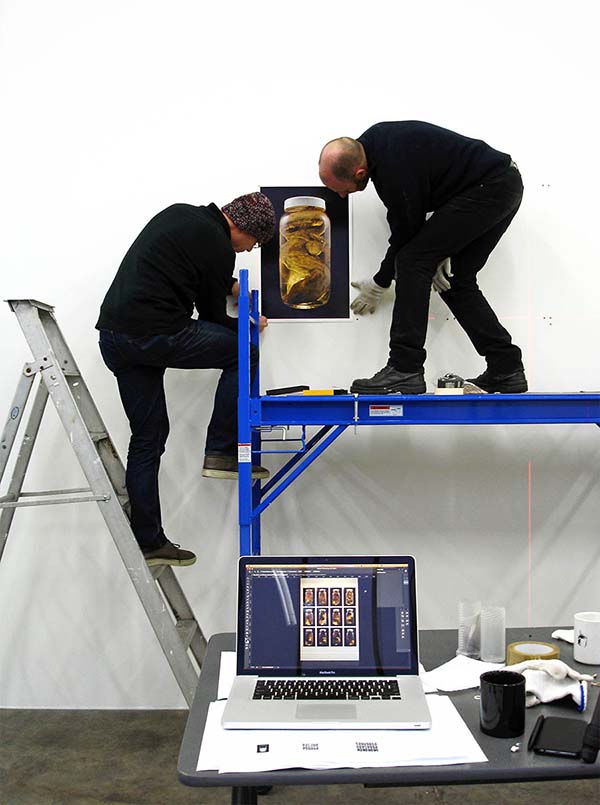
Neil Pardington, with the assistance of Rob Hood, installing the first print
of a grid of twelve, in the front gallery at 52 Buchan St. Sydenham.